| * MikaShoppe is now open!!! As the opening promotion, all items will be shipped FOC within Malaysia. (promotion ended on 31 October 2010) | |
| * Refer a friend to buy from us and enjoy 20% discount on any items! | |
| * Spend more than RM100 in one receipt and enjoy discount 10% on next purchase. |
Info
Why LED?
Grow Lights and Lumens
Using LED's to grow plants is one of the greatest revolutions in technology of the 21st century. Earlier models of LED's were not strong enough, nor did they have the right spectrum for growing plants effectively. GrowL LED grow lights have worked through all of that through testing to bring you our line of High Powered LED Grow Lights utilizing Bridgelux LED's that are made in the USA. We use the right spectrums and they are more than powerful enough to do an amazing job on your plants and flowers! They are more than 80% efficient on average in comparison to traditional HID's (including HPS and MH) and produce far less heat with no ballasts. In addition, GrowL LED grow lights produce more than 90% LESS heat, running cooler than your body temp, making them cool to the touch! If your plants are in a tight space, they have no where to grow but up. If GrowL LED lights are used, the plants can touch the light without the worry of burning them! For all the residents in warm climates, you can now shut off that AC, and feel the relief instantaneously! As far as everyone else not residing in a warm climate, you are still going to save more than 80% compared to those HID's!There is a common misconception going around about Lumens. Lumens are how bright the light is to the human eye, not to the plant. However they are important. You need to know how each light works to know how to compare properly, "Apples to Apples" not "Apples to Oranges". This is where it becomes east to get confused. Most will look at for example our 300 watt PITBULL GROWL LED grow light that is equivalent to a 1,000 watt HPS or more. A standard average model 1,000 watt HPS bulb has 110,000 lumes. Our Standard PITBULL GROWL F.C. has 12,000 Lumens. Common sense would bring you to the conclusion that the 110,000 Lumens HID light is much brighter than 12,000 lumen Growl LED grow light. However this is not the case as we want to compare "Apples to Apples". You have to consider plants can only absorb approximately 8-10% of the light produced by the HPS and the rest is reflected off. Therefore, the 110,000 lumen bulb is only giving the plant between 8,800 and 11,000 lumens. Even if you are using the 140,000 lumen Hortilux EYE HPS bulb, your plant will still only absorb approximately 11,200-14,000 lumens. Whereas the light from the 300 watt GrowL LED light is 100% entirely absorbed by the plant, giving it the full 12,000 lumens! In addition,the spectrums utilized by GrowL LED are specific to each plant type and needs through photosynthesis. Another point you should consider when you are weighing out the benefits of LED's vs. HID's is the bulb replacement cost. There is NO bulb replacement needed through the life of GrowL LED's lights, which are rated at 50,000 hours. So when you look at the differences between HID's and GrowL LED grow lights from a factual perspective, GrowL LED grow lights are cheaper in cost over the life of the light, cheaper to run, and allows other savings like the removal of the AC and relief from stressing about power bills! In conclusion you: SAVE,SAVE,SAVE, have healthy plants, and help save the environment. Enjoy!
Why Everyone is Changing to LED?
Using LED's to grow plants is one of the greatest revolutions in technology of the 21st century. Earlier models of LED's were not strong enough, nor did they have the right spectrum for growing plants effectively. Today technology has worked through all of that through testing to bring you our line of High Powered LED Grow Lights utilizing Bridgelux LED's that are made in the USA.They do have the right spectrums and are powerful enough to do the job we need them to! They are 80% more efficient on average in comparison to traditional HID's (including HPS and MH) and produce far less heat with no ballasts. In addition, GrowL LED lights produce more than 90% LESS heat, running cooler than your body temp, making them cool to thetouch! If your plants are in a tight space, they have nowhere to grow but up. If our LED lights are used,the plants can touch the light without the worry of burning them! For all the residents in warm climates,you can now shut off that AC, and feel the relief instantaneously!Environmental Benefits of LED Lighting
By changing one light bulb in your home you could help to save the environment. The fact is that by changing one of your regular incandescent light bulbs to a LED light bulb, you can help to protect the environment and save money. LED lights last 10 times longer than a regular incandescent bulb and are four times more efficient. LED lighting uses nearly 90 percent less energy than an incandescent bulb does, which translates to financial savings for you and a cleaner environment.Though currently more expensive to purchase up front, LED lighting fixtures will save you in long-term operational costs. LED home lighting only uses about 20 percent of the energy that an incandescent bulb uses. An 18-watt LED light can replace a 75-watt incandescent bulb; in the lifetime of that 18-watt LED light (which is ten times longer than the incandescent) you will save 570 kilowatts of energy. This would be a rough savings of nearly $50 on your energy bill for just one light bulb. An LED light bulb easily pays for itself several times over in its lifetime.
Regular light bulbs put carbon dioxide, sulfur oxide and nuclear waste into the landfills and atmosphere. By changing your light bulbs to low energy LED light bulb, one single bulb keeps one half ton of carbon dioxide out of the atmosphere through its life cycle. It will also keep the sulfur oxide and nuclear waste to a minimum in the landfills and environment. By switching one bulb in your home and in every home throughout the United States, the environmental concerns being discussed with fervency these past couple of years can begin to be addressed on a global scale. We need to lead the way and set the example for the rest of the world.
It is possible that if every house in the United States switched to LED light bulbs, 90 current power plants could retire, an amazing fact especially considering that more power plants are currently needed and being planned and constructed.
Staying conscious about the environment and being 'environmentally friendly' doesn't mean you have to change the way you live completely, although if you did 'go green' entirely, it certainly would have an amazing impact on the earth. You can increase your energy efficiency with small and simple changes that will actually benefit you as well as the environment. Saving money with LED lights in your home makes going 'green' an easier pill to swallow, especially because you will notice the difference immediately when you use LED light bulbs. This is do to there design that delivers a higher quality lighting spectrum than traditional lighting or CFL's. Traditional lighting spectrum = 80 out of 100, LED lights are at 94 out of 100 meaning you are getting a cleaner, brighter version of light that is not only beautiful but easier on your eyes.
LED light benefits expand to areas other than home lighting as well. Considering LED lights during the Christmas holiday is also a smart energy conservation idea. LED lights are cool and energy efficient during the time of year when energy use rises significantly. LED lanterns and LED flashlights are great for camping and hunting as well as a vital part of any home emergency kit. With these LED implementations your family will not need to worry about batteries running dead in the middle of use; LED flashlights and LED lanterns use less energy meaning your standard batteries will last considerably longer.
LED lighting is being billed as the best long-term solution for your home and outdoor lighting needs. Its environmental benefits and energy efficiency make it worthwhile for your household and your world.
-Ben Anton, 2007
Common Bulb Types
Group 1 (Without general restrictions)
|
Replace Your Headlight Bulb
Light's Out! You Need a New Headlight Bulb
If you forget to periodically check your headlights, there's a fleet of black-and-white cruisers who will gladly do it for you. Unfortunately they charge quite a bit, and that's if you don't have to show up in court with a picture of your car with both lights on to prove that you fixed it. So go ahead and take a peak at the front of your car. If you're lazy you can wait until you're behind a big trailer and check them from your driver's seat.If you have a bulb out, you can pay the guy at the oil change shop four times the price of a new bulb, and he'll take care of it. But that's not you! You do things yourself, so go ahead and make it happen!
This procedure covers most halogen headlight systems with bulbs loaded into the back of the lens. If your car has sealed beam headlights, this won't help.
*Don't know what your bulb is? Check out these common bulb types so you can ask for the right bulb.
Getting Ready to Replace the Bulb
What you'll need:Usually no tools at all!
Locate the Bulb Holder
With the hood propped safely open, look around to the back of the headlight and locate the bulb holder. It will have three wires coming out of a plug that is shaped like a trapezoid.
Unplugging the Headlight Wiring
Remove the Wiring HarnessThe three wires are attached to a plug that is at the base of the headlight itself. This plug will be held in by a plastic catch, a metal clip, or in some cases a screw cap.
For a plastic catch, you'll see a little lever sticking up at the top of the plug. Press this down with your thumb while you pull firmy but gently on the plug. It should slide off.
For a metal clip, just pull up and away and it will come off in your hand. Try not to drop it, when these things hit the pavement the clips are like stick-bugs in the woods, hard to see.
For a screw cap, simply unscrew it by turning it counter-clockwise (the old righty-tighty/lefty loosey might get confusing since you are doing the reacharound.)
Out With the Old Headlight Bulb
Remove the Old BulbWith the wiring out of the way, you should be able to pull the bulb out by holding onto the base (the thing that the plug was in). In some cases, you may have to rotate the bulb slightly for it to release, but this is rare these days.
In With the New Bulb
Put the New Bulb in PlaceBefore you take the new bulb out of the packaging, grab a tissue or a clean rag. If the oils on your skin get on the glass bulb, it can burn out prematurely, in some cases the same day. If you must touch the glass, do so with the tissue. You shouldn't have to.
Holding the bulb's plug end, stick it into the back of the headlight. Be sure to visually confirm that it's all the way in. You can tell because it will be lined up evenly and none of the bulb's rubber gasket will be showing.
Light Up Your Life
Plug the wiring back in and re-secure the bulb. Test it now. If you see a white bulb come on now it'll be a lot better than seeing your favorite blue-and-red bulbs in the rear view mirror later. You're finished! And the road to Automotive Empowerment continues.
Subscribe to:
Comments (Atom)




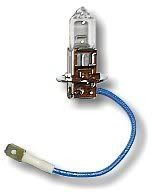
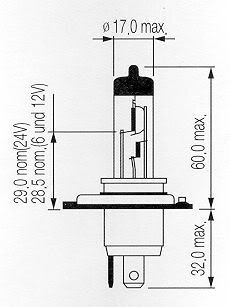
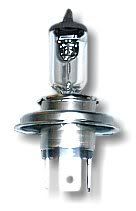

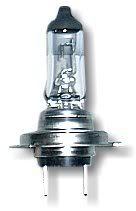
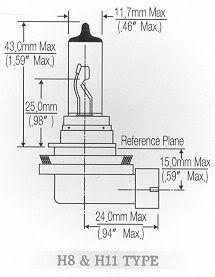

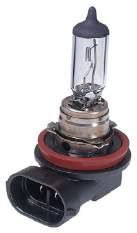





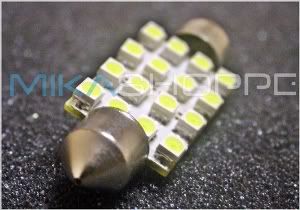
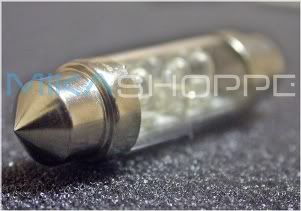
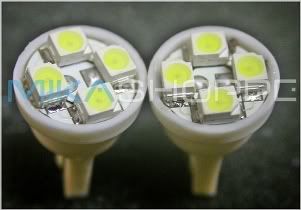
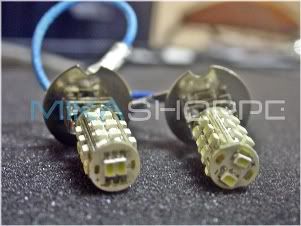
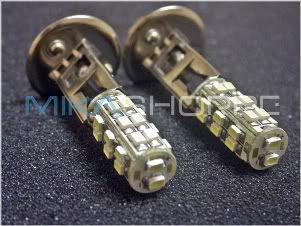
 How To Buy
How To Buy Shipping
Shipping
 Disclaimer
Disclaimer
